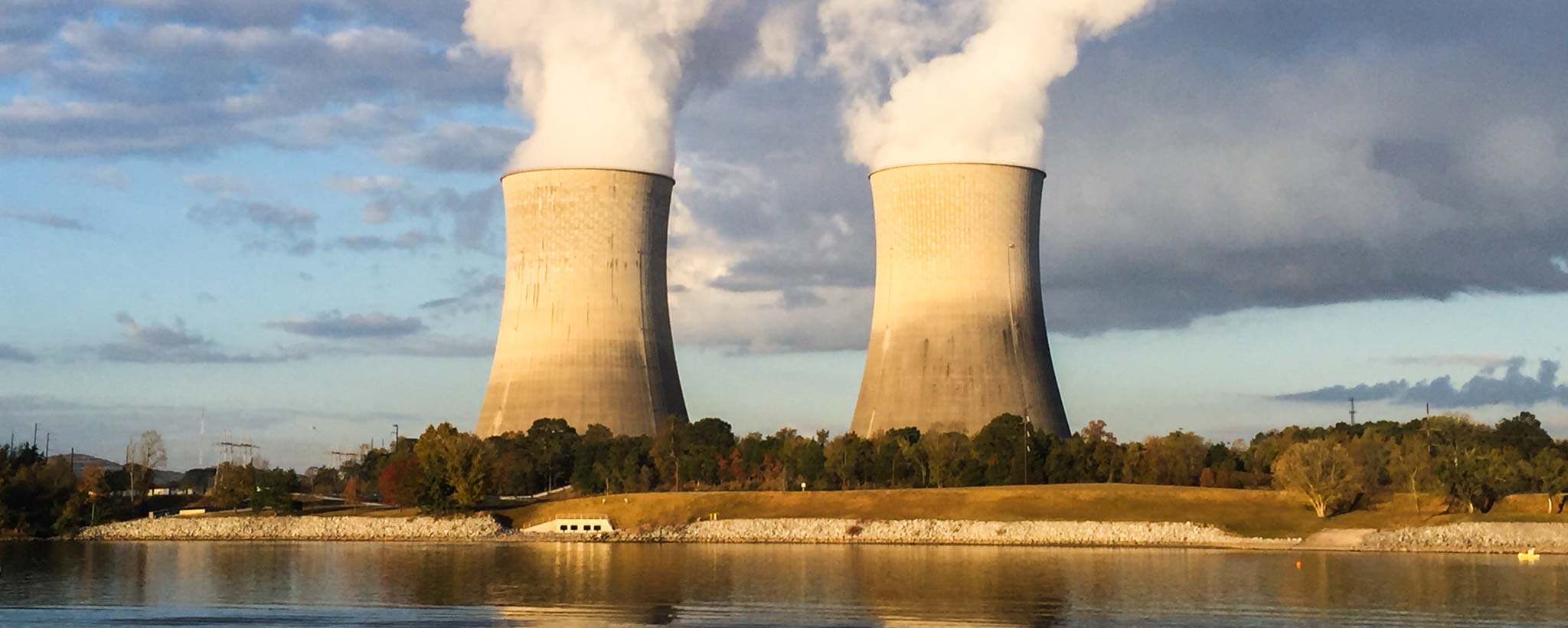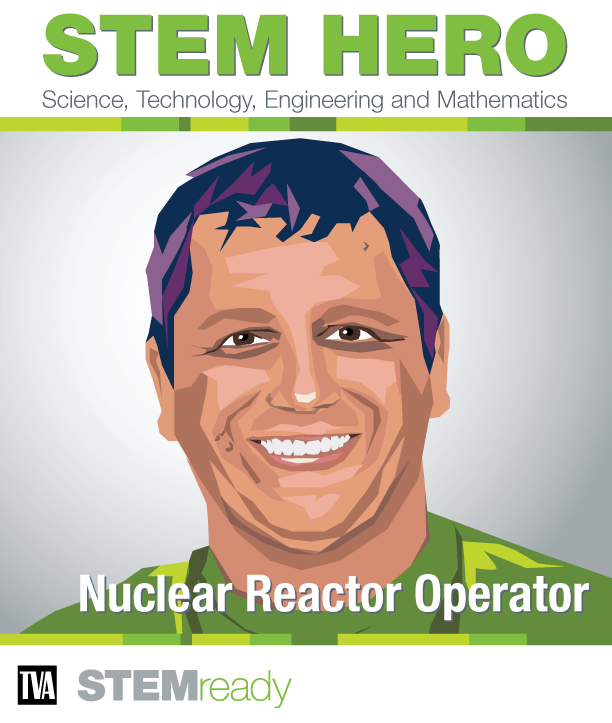Nuclear Power
TVA runs three nuclear power plants. Nuclear power makes about 42 percent of all the electricity generated by TVA, and about 20 percent of all the electricity generated in the United States.
Nuclear power is produced when the atoms that make up enriched uranium are split. Uranium is mined from the ground, just like coal or copper or silver ore. The uranium is then formed into pellets that are put in tubes inside a nuclear reactor.
The pellets are bombarded with neutrons, which cause the uranium atoms to split. This is called nuclear fission. Nuclear fission creates enormous amounts of heat, which is used to turn water into steam. The steam is used to turn turbine blades, the blades spin the plant’s generator, and the generator makes electricity.
Fission also creates radiation, which in high doses can hurt people. Learn more about radiation here.
Although many people don’t know it, there are actually two different types of nuclear power plants. They both make electricity, but in different ways.
Boiling-water reactors turn water into steam in the reactor core, and the steam turns the plant’s turbine and generator. TVA’s Browns Ferry Nuclear Plant is a boiling-water reactor.
Pressurized-water reactors, such as TVA’s Sequoyah and Watts Bar nuclear plants, don’t turn water to steam in the reactor core. The water passing through the core is very hot, but it is kept under pressure as a liquid. It flows to a separate area of the plant called a steam generator, where it turns a second supply of water into steam.
The pressurized water goes back to the reactor core to be heated again, and the steam from the second source of water is used to run the generator to make electricity.
Pressurized-water plants like Sequoyah and Watts Bar are much more common in the United States. About 70 percent of U.S. nuclear power plants are pressurized-water reactors.

